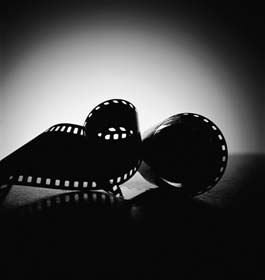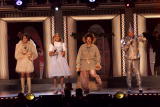|
Theory
|
|||
Adaptation and Narrative
Theory:
Are Adaptations Relevant? If it isn't Written, is it a Narrative?
To adapt is to change. Adaptation is a regular occurrence in the fields of art and entertainment as artists are constantly taking texts from one genre and modifying them according to his or her vision. The change from print to film is usually thought of as being the most common, although the change from print to theatre, from movie to print; from film to television and vice versa are prevalent alternatives.
 to
to
 to
to
Regardless of where the initial idea for the new form comes from, the main argument among theorists is how faithful the adaptation is to the original tale. For some, such as film critic, Jean Mitry, adaptation is the lowest of all art forms and the attempt to do this should not be made. If the adapter follows the original work to the letter, her or she has done a disservice to him or herself; whereas if only the spirit of the original is brought into the new work, it is as if the original has been forgotten. He claims in his article, "Remarks on the problem of Cinematic Adaptation" that one is not exclusive of the other:
And it takes a very curious mentality to believe that one can be faithful to the "spirit" and transforming its structure-as if the letter and the spirit of a work were two entirely separate things, which could be dissociated or superimposed, when in fact both constitute an ensemble of factors, of expressions and meanings and interdependence of which is constantly manifest. To betray the letter is to betray the spirit, because the spirit is found only in the letter (Mitry, 4)
In terms of the adaptations of The Wonderful Wizard of Oz, there is no denying the creative energies that went into the subsequent versions. Each is a unique representation that draws upon and reflects the cultural climate of the time. One of the earliest versions is set in the Jazz Age and portrays Dorothy as a flapper on her 18th birthday; the ever-popular 1939 MGM version is very sweet and innovative as America was on the "last leg" of the Great Depression of the 1930's and was on its way to World War II, while the new colour technology "Technicolor" was just being introduced; 1978's The Wiz, which stars an all African-American cast, came about at a time when African-American self-actualization was at a high point, and disco was the music of choice . In the three examples there are definite attempts at both adapting to the letter and taking only the spirit of Baum's book. Only the MGM film is geared towards children the way the book is; however, this only increases the universality of the tale. Although these are adaptations, the films and stage productions are separate entities that attempt to produce the same story as the original form.

|
Disclaimer © 2003 - 2004 by class of SOSC 4319 at York University |